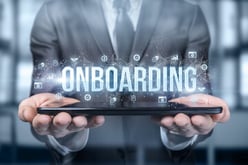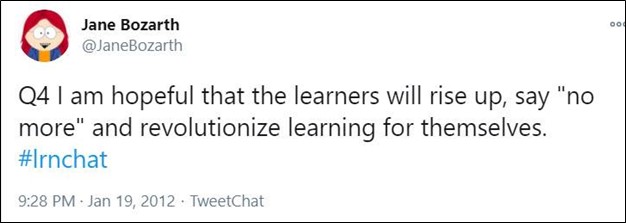Curation is the Key to Managing Your Personal Learning Network
If you’re like me, you are subscribed to dozens of email lists, content newsletters, and newsfeeds about virtual training and learning and...

I can still remember my first day at my first corporate job. It was a lifetime ago. I was very excited. I had a new outfit, a new haircut, and I showed up 15 minutes early to the corporate orientation. I was ready to get started.
These are the questions I wanted answered: 
The orientation left a strong impression on me. Even after (ahem) 25 years, I can visualize speakers and their presentation materials.
You would think that meant the session was impactful, engaging, and important to my work.
You'd be wrong.
The orientation was four hours long-in a seminar room with at least 50 people, none of which were headed to the same department as I was.
I had so much energy. I wanted to learn about my job. I wanted to meet my coworkers and impress upon them that I was going to be a valuable member of their team. Why did that company use that first four hours to essentially have me fill out paperwork?
When I finally found my desk, I was exhausted. Did this represent my work life? What a wasted opportunity for strong employee engagement.
The activities included in this orientation were obviously deemed IMPORTANT, but they weren’t necessarily important on Day 1. I do understand the impetus behind the program design. The human resources organization had limited access to new hires after they actually began working. The “paperwork” surrounding finances, policy, and benefits needed to be completed, and the most efficient way to get that done within those first few hours on day 1.
Unfortunately, There was a lost opportunity to kick start employee engagement.
As my career developed in learning and development, I reflected a lot about how that morning could have been redesigned. Given the technology that was available at the time, the organization may have been able to effectively facilitate the employee onboarding experience with these steps:
The mission critical paperwork would be completed in the afternoon and delivered before the end of the work day. Other activities, like selection of benefits, could be addressed closer to the moment of need, before the 60-day eligibility period was over.
Today's technology can make this process more elegant. New hires can sit down to their desk with their calendars prefilled with training opportunities, deadlines, and links to resources to help them make decisions like selecting benefits. A 30-day journey can presented so all the ‘important stuff’ can get done without it being overwhelming or get in the way of their jobs.
That's critical with the move towards hybrid and global teams. Making connections early with virtual employees makes engagement possible.
Making the onboarding journey meaningful and impactful can be the difference between staying with or leaving a company. In August 2022, we explore ways to create a positive 30-day onboarding journey that creates longevity in your workforce, with a lens focused on maximizing the virtual experience for your hybrid team. (And we’ll provide a visual framework for you to use as a guide!) Human Resources experts and experienced new-hire facilitators have contributed to our monthly podcast, webinar, and blog schedule.
Would you like to learn more about how your organization can maximize new hire engagement in the hybrid workplace? InSync Training's new Trends in Virtual Training - Expert Seminar Series is just the workshop for you! Getting Virtual Onboarding Right - Maximizing New Hire Engagement in the Hybrid Workplace explores how to design a virtual onboarding program, how to connect remote new hires to the rest of the organization, and how to make the first 30 days on the job positive, memorable, and energizing.
You can choose from 12 of our trending workshop topics for up to 12 people in your organization. Purchase 5 workshops and the 6th workshop is free! Click on the image below to learn more.

If you’re like me, you are subscribed to dozens of email lists, content newsletters, and newsfeeds about virtual training and learning and...

The State of Virtual Training and Hybrid Learning, and the Toll it Takes On Learners Editor's Note: This post has been updated from the original,...

1 min read
We’ve been using virtual classroom technologies for more than 20 years now. Unfortunately, we are still holding on to a content model that insists...